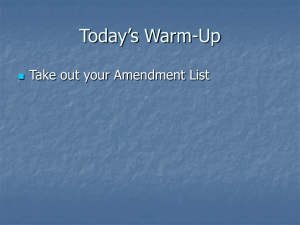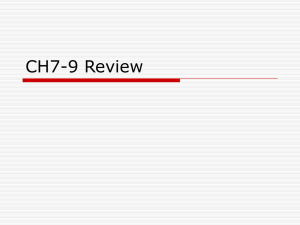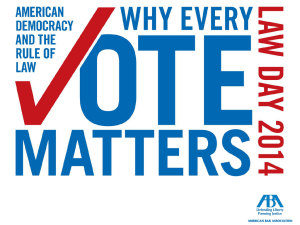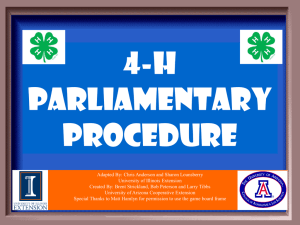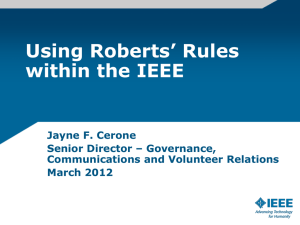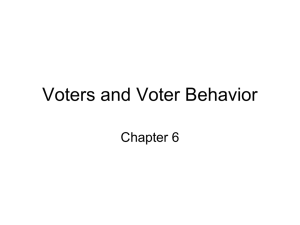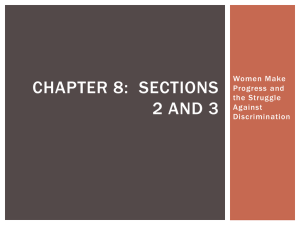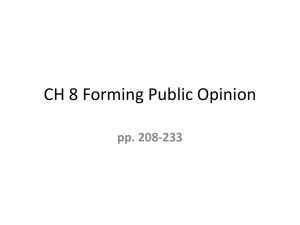Robert`s Rules of Order
advertisement
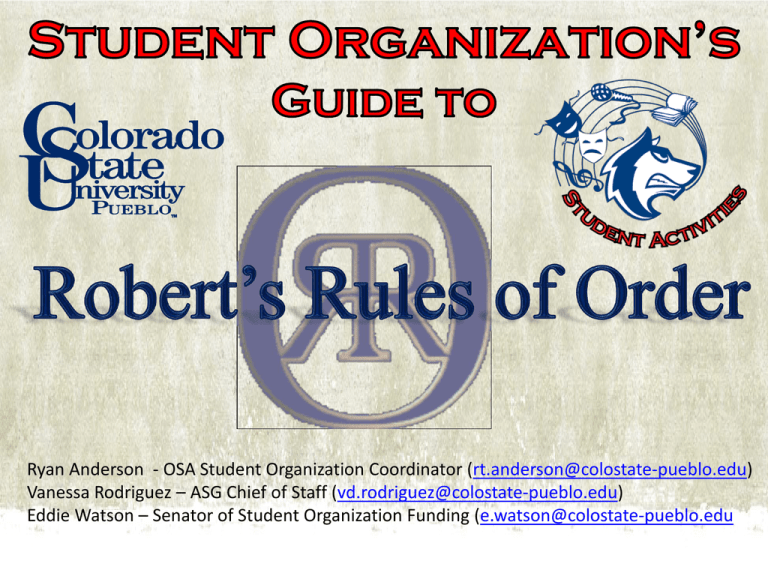
Ryan Anderson - OSA Student Organization Coordinator (rt.anderson@colostate-pueblo.edu) Vanessa Rodriguez – ASG Chief of Staff (vd.rodriguez@colostate-pueblo.edu) Eddie Watson – Senator of Student Organization Funding (e.watson@colostate-pueblo.edu • Had problems creating a more formal atmosphere for your meetings? • Wanted to put together a more organized agenda to conduct your meetings? • Had an occasion where you were unsure how to vote on the issue at hand (officers, activities, items, etc…)? • Needed to create or make modifications to your constitution? • Robert’s Rules of Order is a book of procedures which can be used as a guideline for your organization’s meetings. • The book was written by Henry M. Martin in 1876, but has been updated through ten editions. • Date, Time, & Place – Add the date your meeting will take place, the time your meeting will begin, and the place you are conducting the meeting on your agenda. – Why? • Reference for your members • Way to keep a record of your meetings • Calling the Meeting to Order – Performed by the President of your Student Organization – Your meeting needs a starting point to keep track of your minutes – The time your meeting begins should also be noted here (in case you begin later than the designated time) • Approval of the Minutes – Performed by your organization’s Secretary – Secretary reads through the business of the last meeting noting any important decisions that were made. – After reading the minutes, the Secretary asks “Are there any corrections to the minutes?” • Suggested corrections can be added at this point or the meeting continues. • Reports – Provides a place for your organization to report on the budget, organization’s goals, success, etc… – Types of Reports can include: • President’s – Bring to attention goals that still need to be achieved or followed, success that your organization has accomplished so far (membership numbers, events, potential ideas for goals and activities, etc…) • Treasurer’s – Can include: – Breakdown of your organization’s financial budget – List of members who still need to pay dues – Upcoming event’s budget & expected income • Orders of Business – Old Business • Items covered at the last meeting held go here. • Provides a recap of your last meeting • If an event has not yet occurred but was on the last agenda, you can make a note of it in old business, but can add it again to New Business. • New Business – Any items that are upcoming and/or have not been presented to the members before go here. – If it’s an event or fundraiser, make sure to put the date, time, and place • Next Meeting – Enter the date, time, and place of your next meeting here. • Adjournment – Provides a formal end to your meeting – President requests a motion to adjourn – Requires two motions from two different members who were present through the entire meeting • First member states “I motion to adjourn” • Second member states “I second the motion to adjourn” • Note: Before the second motion is called, items can still be brought up at the meeting. • The ability to vote is an important right as a student organization member • Have the ability to vote: – During officer elections – To ratify your organization’s constitution – For officer removal – To repeal an event or item on your agenda • Officer Elections – Nominations are taken by the President during a meeting. • Only registered members can run for an office • Nominations can require a verbal or written statement by the candidate as to why they feel they are the best suited for the office they are running for. • Nominations must be approved and seconded – Require a two-thirds (2/3) majority vote from eligible (generally registered members who have paid their dues) members • Candidates may vote • Officers may vote • Voting must take place by a secret ballot – Note: One way to allow each member the possibility for a 2/3 vote is by an email election • Officer Elections – Email Election • An email containing each candidates statement can be sent to all the members of the organization for period of time designated by the executive branch. • Members vote on the email and send it to the Secretary (or designated individual such as your advisor) and one voting member appointed by the President to tally the votes. • Removal of Officers – If an officer leaves their position for some reason, a replacement officer occurs via a majority vote and the normal procedure for officer election – An officer in violation of your organization’s purpose or constitution may be removed from office by the following process: • A written request by at least three members of the organization • Written notification to the officer of the request, asking the officer to be present at the next meeting and prepared to speak • Discussion by the membership in regular or called meeting where a majority of the membership is in attendance; • Opportunity for the accused to testify and/or defend; • Motion to impeach followed by a second; and • Three-fourths voting plurality at said meeting in support of the impeachment. • Quorum – What is a Quorum? • Gathering of the minimal number of members of an organization to conduct business – What is the minimum number of members that needs to be present? • Usually majority of registered members (half (50%) plus one) – Remember, you can amend an exception into your constitution for your Quorum numbers • Voting on general items (aside from officer elections, amendments, and officer removal) during your Meeting – When an item is brought up that requires a vote to confirm or deny it: • The President must state (with clarity) the item that is at hand to be voted upon and ask if everyone understands it. • The President must then state: “all those in favor of insert item here, say aye (or raise your right hand).” Wait for those who wish to vote in favor, then ask “all those apposed say aye (or raise your right hand)” • Whichever way the vote favors, the President says “The majority rules in favor (or against) the insert item here ” • Amendments to the Constitution – Can be proposed by any member of the Organization – Must first be presented in writing at the meeting – Generally require a two-thirds (2/3) vote of the members present for the amendment to be placed on the agenda. – Once placed on the agenda, they require: • A motion from a member • A second from another member • A discussion of the amendment at the meeting before it is put into vote • a two-thirds (2/3) majority vote by all active members

